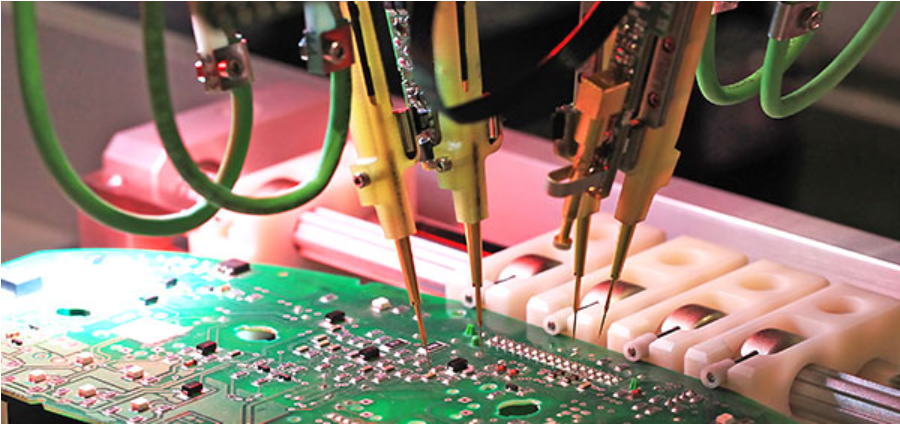In the world of semiconductor testing, precision, accuracy, and efficiency are paramount. As integrated circuits (ICs) become smaller and more complex, the need for advanced testing methods and tools arises. One such tool that has gained significant attention in recent years is the Solder Bump Vertical Probe Card. This innovative technology offers numerous benefits over traditional probe cards, revolutionizing the semiconductor testing process. We will explore the concept of Solder Bump Vertical Probe Cards, their working principles, and the advantages they bring to the semiconductor industry.
What is Solder Bump Vertical Probe Cards?
Solder Bump Vertical Probe Cards, often referred to as SBVP cards, are specialized testing tools used in the semiconductor industry. They are designed to establish electrical connections between the test equipment and the ICs being tested, ensuring accurate and reliable measurement of their performance. SBVP cards are composed of a substrate material, probe tips, solder bumps, and interconnects.
Working Principles of SBVP Cards:
The working principles of SBVP cards are based on the concept of vertical probing. Unlike conventional probe cards that rely on horizontal probing, where the probe tip approaches the IC from a horizontal angle, SBVP cards utilize vertical probing, which involves direct vertical contact between the probe tips and the solder bumps on the IC.
When a semiconductor device needs to be tested, it is placed on the SBVP card, and the solder bumps on the device align with the probe tips on the card. The vertical contact is established by applying a controlled force, ensuring precise and reliable electrical connections. This vertical probing technique allows for improved signal integrity, reduced contact resistance, and enhanced testing accuracy.
Advantages of Solder Bump Vertical Probe Cards:
· Enhanced Signal Integrity
One of the significant advantages of SBVP cards is their ability to provide enhanced signal integrity during semiconductor testing. The vertical probing technique ensures a direct and shorter electrical path between the IC and the test equipment, minimizing signal losses and reflections. This results in more accurate measurements of the IC's performance, enabling engineers to identify and resolve potential issues with greater precision.
· Higher Test Speed and Throughput
SBVP cards offer higher test speeds and throughput compared to traditional probe cards. The vertical probing approach eliminates the need for complex and time-consuming alignment procedures, as the solder bumps and probe tips align naturally. The efficient and precise vertical contact reduces the time required for testing each IC, allowing for faster production cycles and increased throughput in semiconductor manufacturing.
· Reduced Contact Resistance
Contact resistance is a critical factor in semiconductor testing, as it can impact the accuracy of measurements and introduce errors. SBVP cards address this issue by utilizing solder bumps, which provide reliable and low-resistance electrical connections. The vertical probing technique ensures consistent contact pressure, reducing contact resistance and minimizing variations in test results. This improvement in contact resistance enhances the overall reliability and accuracy of the testing process.
· Extended Card Lifespan
Traditional probe cards often experience wear and tear due to the horizontal probing approach, leading to frequent replacement and increased costs. SBVP cards, on the other hand, benefit from the vertical probing technique, which reduces the mechanical stress on the probe tips. This results in a longer lifespan for the cards, reducing the frequency of replacements and lowering maintenance expenses for semiconductor manufacturers.
· Compatibility with Advanced Packaging Technologies
As semiconductor packaging technologies continue to evolve, compatibility with different packaging formats becomes crucial for testing equipment. SBVP cards are designed to accommodate various advanced packaging technologies, such as flip-chip and wafer-level packaging. The solder bumps on the ICs can be customized to match the specific requirements of different packaging formats, ensuring seamless integration and efficient testing processes.
Conclusion:
Solder Bump Vertical Probe Cards have emerged as a game-changing technology in the field of semiconductor testing. With their unique vertical probing approach, these cards offer numerous advantages over traditional probe cards, including enhanced signal integrity, higher test speed, and throughput, reduced contact resistance, extended card lifespan, and compatibility with advanced packaging technologies. As the semiconductor industry continues to push the boundaries of innovation, SBVP cards are set to play a crucial role in meeting the demands for more accurate and efficient testing methods. By leveraging the power of Solder Bump Vertical Probe Cards, semiconductor manufacturers can streamline their testing processes, improve product quality, and ultimately deliver better-performing ICs to the market.


